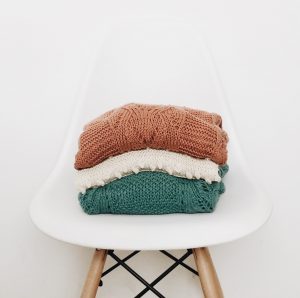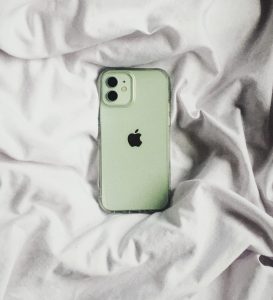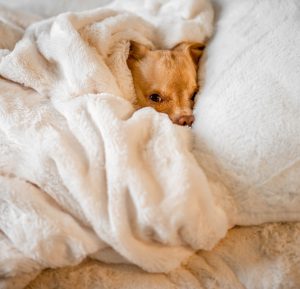Health
Nine steps to creating the best sleep environment
Creating a calm environment can be one of the best ways to aid better sleep quality. If you struggle to drift off at night, it’s worth taking a look at your bedtime surroundings.
Even tiny, blinking lights on pieces of tech can stop us falling to sleep, as well as the colours of our walls, the thermostat temperature and worn out mattresses (the princess and the pea fairytale made a fair point!).
Here, we share actionable tips to create the best sleep environment possible to help ensure a good night’s kip.
How to create the best environment for sleep
Declutter
 Are overspilling wardrobes, messy bedside tables and piles of laundry stressing you out? Decluttering your bedroom, and any space in your home for that matter, can have a positive impact on your wellbeing.
Are overspilling wardrobes, messy bedside tables and piles of laundry stressing you out? Decluttering your bedroom, and any space in your home for that matter, can have a positive impact on your wellbeing.
Clutter and mess can trigger feelings of stress. This, in turn, can adversely affect sleep quality and duration. A 2015 study conducted by New York’s St. Lawrence University, found that people with cluttered bedrooms took longer to fall asleep than those who kept the space neat and tidy.
While it’s not always possible, keep your bedroom solely for rest and relaxation rather than a place to answer work emails or be glued to the television.
If you need some direction on decluttering your spaces, read our advice here. In the words of organising consultant, Marie Kondo: if it doesn’t spark joy, it’s time to pass it on.
Lighting
Ensure the room is as dark as possible. The Sleep Charity says that, ideally, you shouldn’t be able to see the other side of your bedroom at night. Light can still be detected through your eyelids, so you need darkness to stay fast asleep.
Invest in a good pair of curtains, shut the door, place stickers over any lights from technology and use an  eye mask to block out the light (especially if you work shifts) to achieve this.
eye mask to block out the light (especially if you work shifts) to achieve this.
If you like to sleep with a nightlight, opt for one with a red bulb rather than white so it doesn’t interrupt melatonin secretion. Melatonin is a hormone your brain produces to help control your sleep cycle.
Lighting before bedtime is just as important. Swap bedside lamp bulbs for ones with a lower wattage or use a dimmer light if you want to read at night.
And be sure to avoid screens an hour before bedtime. Blue light, which is emitted by laptops, phones and other pieces of tech, has the greatest impact on your circadian rhythm. The reason for this is that the short wavelengths suppress production of melatonin. Scrolling through social media before lights out is a big no-no.
Colours
While you may have decorated your bedroom with aesthetics in mind, the colours of our surroundings is also thought to have a psychological impact at bedtime.
Some colours invoke feelings of relaxation and calm. These are usually cooler, more neutral shades, such as blues or greens.
In contrast, brighter colours can make you feel energised and active, such as vibrant reds, oranges and pinks. While these aren’t negative emotions to feel, they aren’t ones you want to invite into your bedroom while you are trying to catch 40 winks.
Some also think that glossier paints reflect more light, impacting sleep. Opt for matte finishes instead.
Plants
Adding some greenery into your bedroom can help you drift off, and some plants have more benefits than others.
Jasmine has been linked to lowered anxiety levels and better sleep quality, while lavender is famed for its calming and soothing effects. There are also a number of clinical studies showing how lavender’s scent can help to promote relaxation and sleep.
Temperature
In the spirit of Goldilocks, you don’t want your bedroom too hot or too cold. Instead, it needs to be somewhere in the middle.
Experts say that the best temperature for sleep is around 16°C to 18°C. Hot temperatures can disrupt your sleep and make you restless through the night. A room that is too cold can make it difficult to drift off in the first place.
In the summer, you might find it helpful to sleep with an open window to let in cooling, fresh air, and use cotton bedding and nightwear to wick away sweat. Meanwhile, in the winter or on chillier nights, an extra blanket, fluffy socks or hot water bottle can keep you cosy and a little warmer.
More helpful pointers
- Avoid letting pets sleep in your bedroom (or your bed, for that matter) unless absolutely necessary as
they can disrupt your sleep. - Keep noise in your bedroom to a minimum to avoid disturbance – use ear plugs if necessary.
- Invest in a good quality mattress and supportive pillows for maximum comfort.
- Calming essential oils, such as lavender and frankincense, can also aid relaxation before bedtime. Scents won’t usually wake you up.






